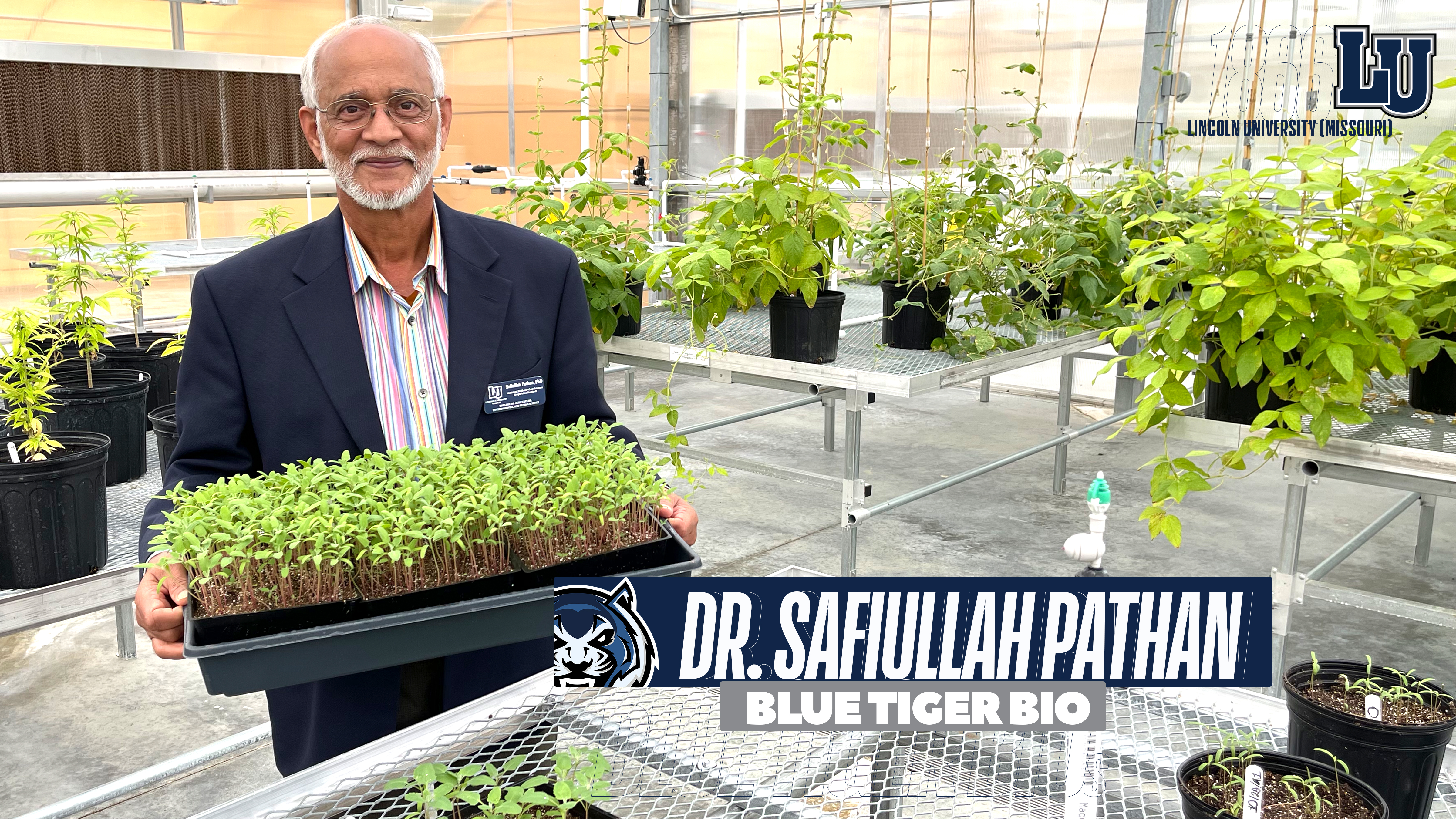Blue Tiger Bio: Dr. Safiullah Pathan
 Associate Professor of Crop Science, Dr. Safiullah Pathan. Photo by: Keena Lynch.
Associate Professor of Crop Science, Dr. Safiullah Pathan. Photo by: Keena Lynch.
Quinoa.
Civilizations have eaten the grain of this healthy vegetable for centuries, and the consumption of this nutrient-rich spinach-relative has become a hot dieting trend in the United States, especially over the past decade. What is only now being discovered is that the leaves of the quinoa plant, previously discarded and left uneaten, have even more far-reaching nutritional benefits than the grain.
Leading that discovery with ground-breaking research is Lincoln University's own Dr. Safiullah Pathan.
"As of my knowledge, we're doing the first study of this kind in the United States," Dr. Pathan said. "If you look at international papers discussing the nutritional values of quinoa greens, you see that most of the work is being done outside of the states; in places like Poland, Egypt, Israel, etc. In the United States, there's only one: this study that we're doing."
The benefits of quinoa are numerous: it can be grown in climates both arid and freezing; it can be grown year-round in a greenhouse and high tunnel; it can be harvested in just four-to-five weeks; and it requires less water and fertilizer than other vegetable crops. Quinoa greens in particular contain higher levels of amino acids and valuable nutrients such as potassium, manganese and copper, as well as lower amounts of heavy metals such as arsenic and lead, than the leaves of spinach and amaranth plants.
"I'm presenting a paper, "Quinoa: A Nutrient-Rich Duel-Use Crop," because while people know about the grain, I'm promoting that we can use the grain and we can use the nutrient-rich greens," Dr. Pathan said.
Dr. Pathan has shared his discoveries with other agricultural-based universities, including Virginia State, as well as with farmers from across the country. This year, Lincoln has started giving some seeds from its quinoa plants to other farmers and researchers, so that they can help spread the growing and harvesting of this wonder crop.
While Lincoln is now at the forefront of this research, none of it would have happened if it weren't for a chance conversation that Dr. Pathan had with a woman in Columbia, Mo.
"I donate blood platelets, and one day while donating in Columbia, I was talking with a woman and telling her what I do, and she asked me, 'Do you know about quinoa?'" Pathan explains. "She said it was one of the most nutritious foods in the world, and I felt ashamed, because I was an agricultural scientist but had never heard of quinoa. After she wrote it down, I went home, got on the computer and searched Google for quinoa, and learned it was indeed one of the most nutritious foods in the world."
Dr. Pathan started asking his peers in academia if they had been studying quinoa, and found that very few universities in the United States were doing any kind of research on the plant. Dr. Pathan became so fascinated with learning more about quinoa that, when he came to Lincoln University, he contacted the United States Department of Agriculture and requested a sample of the vegetable.
"Myself and Grato [Ndunguru], for the past four or five years, have been working together, doing the research," Dr. Pathan said. "I started with the grain first, and then the greens. And now more people are interested in the greens."
Dr. Pathan's fascination with agriculture and the ways it can benefit society began as a small child in his native country of Bangladesh.
"When I was six or seven, I went to the International Rice Research Institute in the Philippines, and they had a variety of rice plants," Dr. Pathan said. "Some were tall, five feet or six feet, with not more than three-to-five branches. I saw smaller seedlings that yields 10-to-20 branches. When I saw that, I was very interested in why the smaller plants had more branches, yielding more grain."
Answering questions that arose when he was just starting his primary education led to Dr. Pathan pursuing a Ph. D in agriculture at Texas Tech University. That in turn has led to him working with farmers and agriculturalists across the country, with his research influencing new trends in planting rice that have led to higher yields.
"Now in Bangladesh, you no longer see the (taller rice plants), it's all this (shorter) variety," Dr. Pathan said.
Dan Carr
Photo by: Keena Lynch
